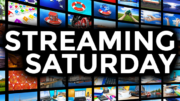The big push with satellite TV providers right now is integration. I think we all realize that streaming isn’t going away. Live TV is great but it’s not the only game in town. Just like movies did when TV came in, old industries have to find ways to coexist with new ones. I think it took a long time for traditional pay-TV to learn that lesson, but now that they have, it’s a big part of their focus.
DISH’s Hopper Plus and DIRECTV’s Gemini are two ways of addressing this. Hopper Plus is an add-on to the DVR which allows streaming content to be received by the DVR and then distributed out to the client boxes. Gemini takes a different tack, replacing the client box with a streaming box that runs an app mimicking a traditional Genie client. Either way, it works. Either way, customers are lining up. But this really makes me wonder…
Was it such a problem before?
If you want to stream, you stream. If you want to watch live, you watch live. In most cases, just picking up the correct remote and pressing the power button will turn on the TV, switch inputs, and get you where you need to go. I’ll grant you, DIRECTV’s Genie remote doesn’t always switch inputs when it should. It’s something about the timing, I think. But either way, I don’t look at this as a big hurdle.
Traditionally, this sort of thing was simplified using a universal remote. Universal remotes combined all the functions of all your devices into one remote control. The fancier ones were programmable and had macro keys that could turn everything on at once, switch inputs, or do other special tricks. People didn’t like universal remotes, because most folks found them hard to program and not flexible enough. But, in the 2000s, they were almost a necessity as the average living room had a VCR, DVD, pay-TV box, and potentially other devices like a satellite radio or even a cassette player. With all that in one place, you didn’t want to have a coffee table full of remotes.
Of course today, you’ll generally have a streaming box, pay-TV box, and that’s it. But that’s still two remotes on the coffee table. So I’ll ask again, is this really a problem that needs solving?
Is switching inputs really the breaking point?
I’ve been told several times over the years that switching inputs on the TV is really a big part of the problem. I know that in my house, switching inputs is a little bit of a pain point. The TV goes black for a few extra seconds and it’s a slow process. This is because every content provider insists on copy-protection measures that don’t work and just slow everyone down. Having only one box, and not changing inputs, generally solves the problem unless there’s a mode change from SDR to HDR for example.
But I’m told that there are people who consider switching inputs such a chore that they just won’t do it. They’ll give up on live TV altogether rather than push an extra button. That’s what really scares pay-TV companies, I think. But is it really true?
That’s why I am asking for you, our Solid Signal faithful, to tell me the truth. Like all of you, I’m excited about DIRECTV and DISH’s new hardware. I think it’s great to have an integrated experience, and I think eventually all pay-TV providers will have apps for every major streaming platform. But in the meantime, is changing input so hard? You tell me.





